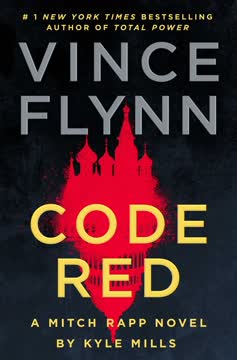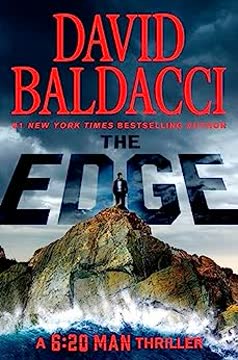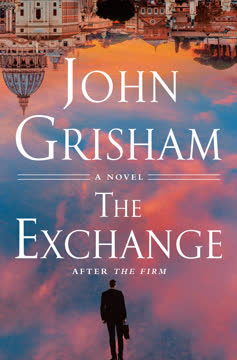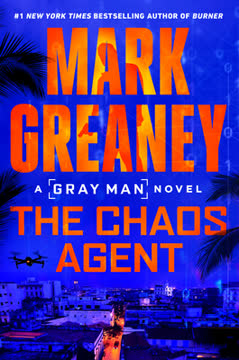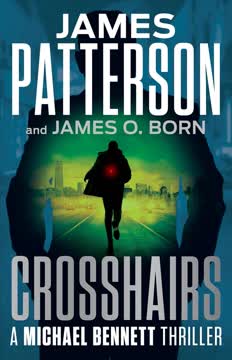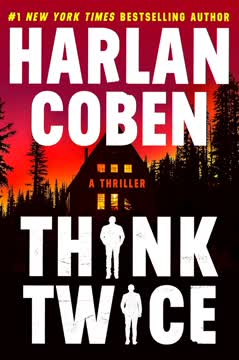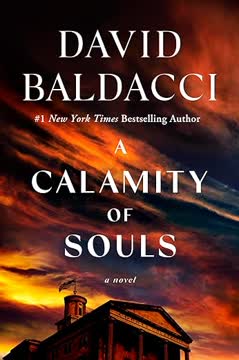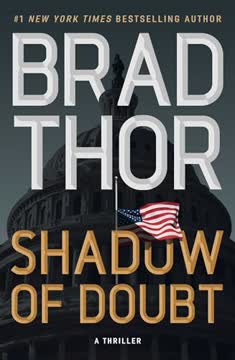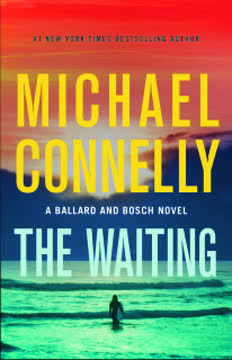Plot Summary
Hospital Intrusion and Threats
Keith Bridgeman, a retired scientist, is recovering from a heart attack in a Chicago hospital when two mysterious women, Roberta and Veronica Sanson, enter his room. They are not medics, but highly trained operatives. They threaten Bridgeman and his family, demanding information about a secret from 1969 involving a research team in India. Bridgeman, terrified, tries to resist but is ultimately forced to give up a name from a list. The women reveal their connection: they are the daughters of Morgan Sanson, a man wronged by the events of the past. When Bridgeman cannot provide the final, missing name, the sisters kill him, staging his death as a suicide.
Reacher's Arsenal Investigation
Jack Reacher, now a demoted Military Police captain, is sent to Rock Island Arsenal to investigate inventory tampering. He discovers that M16 rifles have been doctored—civilian parts swapped for military ones, making them semi-automatic only. The investigation leads to Sergeant Hall, who is running a scheme to sell military-grade parts on the black market. Reacher's methodical approach exposes the scam, but he senses a larger conspiracy at play, especially as the case seems to connect to other, more sinister events.
Deaths and Secret Lists
As more former members of the 1969 research team die in apparent accidents or suicides, it becomes clear that someone is targeting them. The Secretary of Defense, Charles Stamoran, is personally invested, ordering surveillance and protection for the remaining team members. The deaths are methodical, each victim pressured for the identity of an "eighth man" involved in the secret project. The Sanson sisters are revealed as the killers, seeking vengeance for their father's fate.
Cover-Ups and Conspiracies
Stamoran and his wife, Susan Kasluga, discuss the deaths and the buried secrets of Project 192, a Cold War-era bioweapons antidote program run in India. The project's true nature—its offensive counterpart, Project Typhon, and a catastrophic gas leak that killed over a thousand civilians—has been covered up for decades. The government's efforts to keep the secret have left a trail of guilt, paranoia, and unresolved justice.
The Sanson Sisters' Mission
Roberta and Veronica Sanson, daughters of Morgan Sanson, believe their father was framed as a saboteur and driven to suicide to protect the real culprits behind the gas leak. They systematically hunt down the surviving members of the research team, extracting information and killing those who cannot—or will not—reveal the missing name. Their quest is both personal and symbolic, seeking to right a generational wrong.
Task Force Assembles
A special task force is formed, including Reacher (Army), Amber Smith (FBI), Kent Neilsen (CIA), and Gary Walsh (Treasury), to investigate the murders and prevent exposure of the secret project. They are given full transparency—on paper—but quickly realize they are expendable, chosen for their flaws as much as their skills. The team's investigation is hampered by secrecy, misdirection, and the looming threat of being scapegoated.
Murders Escalate
Despite increased surveillance, the Sanson sisters continue their killing spree, eliminating scientists in New Orleans, Colorado, and California. Each murder is staged as an accident or suicide, and each victim is interrogated for the elusive eighth name. The task force struggles to keep up, and the government's attempts at protection repeatedly fail.
The Eighth Name Mystery
The central mystery revolves around the identity of the "eighth man" on the 1969 team. The sisters believe this person orchestrated the cover-up and their father's downfall. As the task force investigates, they uncover layers of deception, including the possibility that the eighth man was not even present in India, but was the true mastermind behind the project.
KGB, Typhon, and Truth
The team consults a Russian defector, Sarbotskiy, who confirms the existence of Project Typhon, the offensive bioweapons program. They track down Spencer Flemming, a journalist who was silenced decades ago after uncovering the truth. Flemming's hidden files reveal the real death toll of the gas leak and implicate high-level American officials in the cover-up. The evidence points to a conspiracy that goes beyond the original research team.
Pritchard in Hiding
Neville Pritchard, the final surviving scientist, goes on the run, using elaborate escape routes and safehouses. The sisters and a government hitman both pursue him. Ultimately, Pritchard is found dead in his RV, killed by carbon monoxide poisoning—a murder staged as suicide. With his death, the last direct link to the secret is seemingly lost.
The Journalist's Evidence
Flemming's photographs and articles, suppressed for decades, provide irrefutable proof of the mass casualties and the government's role in the disaster. The task force realizes that the real villain is not among the dead scientists, but someone higher up—someone who profited from the cover-up and orchestrated the silencing of witnesses.
The Final Showdown
Reacher and Smith piece together the evidence, tracing the chain of command back to Charles Stamoran, the Secretary of Defense. The Sanson sisters, having learned the truth from Susan Kasluga, lure Stamoran to a pumping station for a final confrontation. In the ensuing chaos, both sisters are killed, Stamoran is fatally wounded, and Kasluga's complicity is exposed.
Aftermath and Reckoning
With Stamoran dead and Kasluga arrested, the truth about Project Typhon and the gas leak finally comes to light. The government scrambles to contain the fallout, but the evidence is overwhelming. The task force is disbanded, and the surviving players must reckon with the moral cost of their actions.
The Real Villain Unmasked
Susan Kasluga is revealed as the true architect of the cover-up. She stole the Typhon formula, built her fortune on its watered-down version, and orchestrated the silencing of witnesses—including her own husband. Her downfall is both legal and personal, as she is confronted with the consequences of her ambition and betrayal.
Justice, Redemption, and Fallout
The Sanson sisters' quest for vengeance ends in tragedy, but their father's name is cleared. The families of the gas leak victims receive restitution, and the journalist Flemming is finally vindicated. Reacher, Smith, and Walsh move on, changed by the experience. The book closes with a meditation on the cost of secrets, the complexity of justice, and the hope for redemption.
Characters
Jack Reacher
Reacher is a former Army MP, demoted but undeterred, whose dogged pursuit of the truth drives the narrative. He is methodical, physically imposing, and unafraid to challenge authority. Reacher's sense of justice is uncompromising, and he serves as the story's anchor, navigating the murky waters of government corruption and personal vendetta. His relationships with the task force members reveal his capacity for empathy and his deep-seated need to protect the innocent.
Roberta and Veronica Sanson
The Sanson sisters are the primary antagonists, motivated by the disgrace and suicide of their father, Morgan Sanson. Trained in the Israeli military, they are resourceful, ruthless, and emotionally scarred. Their mission is both personal and symbolic—a quest to punish those responsible for their family's suffering. Their psychological complexity is evident in their unwavering loyalty to each other and their willingness to cross moral lines for what they perceive as justice.
Charles Stamoran
As Secretary of Defense, Stamoran is the architect of the cover-up and the true "eighth man." He is cold, calculating, and willing to sacrifice anyone to protect his legacy. Stamoran's relationship with his wife, Susan Kasluga, is both a partnership and a battleground, as both are complicit in the crimes of the past. His downfall is a study in the corrupting influence of power and the ultimate futility of trying to bury the truth.
Susan Kasluga
Kasluga is a pioneering businesswoman whose public persona masks her role in the original disaster and subsequent cover-up. She is ambitious, intelligent, and ultimately ruthless, willing to betray even her husband to protect herself. Her psychological profile is marked by denial, rationalization, and a chilling capacity for self-preservation. Her exposure and arrest serve as the story's final act of justice.
Amber Smith
Smith is the FBI representative on the task force, driven by personal loss and a desire for redemption. Her husband's murder by a KGB agent haunts her, influencing her actions and relationships. Smith's journey is one of healing, as she confronts her trauma and reclaims her sense of purpose. Her partnership with Reacher is built on mutual respect and shared determination.
Kent Neilsen
Neilsen is the CIA's man on the task force, a once-promising agent now struggling with alcoholism and guilt. His investigative instincts are sharp, but his personal demons make him vulnerable. Neilsen's murder, orchestrated by the very people he is supposed to serve, underscores the story's themes of betrayal and expendability.
Gary Walsh
Walsh represents the Treasury Department, initially disengaged but gradually drawn into the investigation. His expertise in financial forensics uncovers the money trail that links the past to the present. Walsh's arc is one of awakening, as he moves from passive observer to active seeker of truth.
Morgan Sanson
Though dead before the story begins, Morgan Sanson's legacy drives the plot. Once a conscientious safety officer, he is scapegoated for the gas leak and driven to suicide. His daughters' quest for justice is both a tribute and a tragedy, as they become instruments of violence in his name.
Spencer Flemming
Flemming is the investigative reporter whose suppressed work holds the key to the entire conspiracy. Traumatized and in hiding, he represents the cost of truth in a world determined to suppress it. His eventual vindication is bittersweet, as it comes at the cost of so many lives.
Owen Buck
Buck is the dying scientist whose confession sets the sisters on their path. His inability to act sooner is a source of regret, and his partial revelations create as much chaos as clarity. Buck embodies the moral ambiguity of those who know the truth but lack the courage to reveal it.
Plot Devices
Dual Timelines and Interlocking Mysteries
The narrative weaves together the events of 1969 and the present, using the device of a missing name and a secret list to propel the action. Each murder is both a clue and a misdirection, as the true villain remains hidden until the final act. The use of parallel investigations—by the sisters and the task force—creates tension and allows for multiple perspectives on the same events.
Red Herrings and Misdirection
The story is structured around a series of red herrings: the search for the eighth man, the suspicion of KGB involvement, and the apparent guilt of various scientists. Each revelation peels back another layer, forcing the characters—and the reader—to reassess their assumptions. The ultimate twist is that the real villain is not among the obvious suspects, but someone operating from the shadows.
Institutional Betrayal and Moral Ambiguity
The task force is deliberately composed of flawed, expendable agents, highlighting the government's willingness to sacrifice individuals for the greater good. The theme of institutional betrayal runs throughout, as those tasked with protecting the truth are themselves targeted for elimination. The moral ambiguity of vengeance, justice, and redemption is explored through the actions of both the sisters and the investigators.
Psychological Manipulation and Coercion
The Sanson sisters use psychological terror to extract information, threatening loved ones and exploiting their victims' guilt. The government, in turn, uses surveillance, intimidation, and even murder to protect its secrets. The interplay of fear, loyalty, and desperation drives the characters to extreme actions.
Symbolism of Lists and Names
The recurring motif of the list—the missing name, the secret eighth man—serves as a symbol of the hidden costs of secrecy and the burden of memory. The act of naming (or refusing to name) is both a weapon and a shield, with life-and-death consequences.
Analysis
Last updated:
FAQ
Synopsis & Basic Details
What is The Secret about?
- Unraveling a Cold War Cover-Up: "The Secret" plunges readers into a high-stakes investigation initiated by the suspicious deaths of retired scientists, all linked to a clandestine 1969 bioweapons antidote program in India, known as Project 192. The narrative follows Jack Reacher, a demoted Military Police captain, as he uncovers a parallel, more sinister offensive bioweapons project, Typhon, and a catastrophic cover-up involving a thousand civilian deaths.
- Vengeance and Justice: Simultaneously, two highly trained sisters, Roberta and Veronica Sanson, embark on a brutal mission of vengeance, systematically eliminating the surviving scientists. They believe their father, Morgan Sanson, was framed and driven to suicide to conceal the truth about the gas leak and the true nature of the secret projects.
- Converging Investigations: Reacher's independent inquiry into military corruption at Rock Island Arsenal unexpectedly intertwines with the escalating murders. A multi-agency task force is assembled to stop the killers and prevent the exposure of the decades-old secret, leading to a complex web of deception, betrayal, and a desperate search for the "eighth man" who holds the key to the entire conspiracy.
Why should I read The Secret?
- Intricate, Layered Mystery: The novel offers a masterclass in suspense, weaving together dual timelines and interlocking mysteries that keep readers guessing until the very end. Lee Child expertly uses red herrings and misdirection, constantly challenging assumptions about who the real villains are and what truly happened in 1969.
- Deep Dive into Moral Ambiguity: Beyond the thrilling plot, "The Secret" delves into profound ethical questions about government power, the cost of national security, and the nature of justice. It explores how institutional betrayal can ripple through generations, forcing characters to confront difficult choices and the blurred lines between right and wrong.
- Classic Reacher with Added Depth: Fans of Jack Reacher will appreciate his unwavering moral compass and relentless pursuit of truth, even when facing the highest echelons of power. The story also introduces a compelling cast of supporting characters, each with their own psychological complexities and motivations, enriching the narrative beyond a typical action thriller.
What is the background of The Secret?
- Cold War Bioweapons Race: The story is deeply rooted in the historical context of the Cold War, specifically the intense arms race between the US and the Soviet Union, which extended to chemical and biological warfare. Project 192 and its offensive counterpart, Typhon, reflect the era's paranoia and the lengths governments would go to gain a strategic advantage, often operating outside ethical boundaries and international scrutiny.
- Post-Vietnam Era Disillusionment: The narrative subtly touches on the disillusionment following events like the Vietnam War and Watergate, where public trust in government was eroded. This cultural context makes the government's desperate attempts to suppress the truth about Typhon more plausible, fearing further damage to America's standing and internal unrest.
- Geographical and Cultural Contrast: The setting in India for the original project highlights the exploitation of poorer nations for covert operations. The contrast between the "million-degree heat with no amenities" in India and the comfortable lives of the American officials underscores the power imbalance and the disregard for local populations, whose lives were deemed expendable.
What are the most memorable quotes in The Secret?
- "You can't be CEO of anything if you're dead.": Spoken by Charles Stamoran to Susan Kasluga (Chapter 4), this chillingly pragmatic line encapsulates the ruthless, self-preservation mindset of the powerful figures in the novel. It highlights the ultimate stakes of the cover-up and foreshadows the extreme measures taken to protect secrets, even at the cost of human life.
- "The thousand deaths in India is just a number next to the body of one person you knew.": Amber Smith's poignant reflection after Kent Neilsen's murder (Chapter 19) powerfully illustrates the human cost of abstract tragedies. It underscores the novel's theme that while statistics can be easily dismissed, personal loss creates an unshakeable drive for justice, fueling the Sanson sisters' vengeance and Smith's own quest.
- "Men have a long history of underestimating women. Don't you? If you didn't, maybe more of you would be alive.": Roberta Sanson's defiant retort to the agent who underestimated her (Chapter 12) serves as a recurring motif throughout the book. It highlights the pervasive sexism that allowed the Sanson sisters to repeatedly outmaneuver their male adversaries and underscores Susan Kasluga's own rise to power in a male-dominated world, albeit through morally corrupt means.
What writing style, narrative choices, and literary techniques does Lee Child use?
- Sparse, Direct Prose: Lee Child employs a signature minimalist style, characterized by short sentences and direct language, which propels the plot forward with relentless efficiency. This lean prose mirrors Reacher's own no-nonsense approach, focusing on action and observation rather than elaborate introspection, making the complex plot highly accessible.
- Alternating Perspectives & Pacing: The narrative skillfully alternates between Reacher's methodical investigation and the Sanson sisters' brutal mission, creating a dynamic tension. Child uses precise time markers (e.g., "nine p.m. Eastern," "eight a.m. Right on time") to maintain a tight, almost real-time feel, enhancing the sense of urgency and the converging timelines.
- Subtle Foreshadowing and Irony: Child masterfully uses subtle details and ironic dialogue to foreshadow major revelations. For instance, the repeated "fifty/fifty suicide or accident" police assessments are consistently undermined by the reader's growing awareness of foul play, building suspense and highlighting the institutional blindness or complicity.
Hidden Details & Subtle Connections
What are some minor details that add significant meaning?
- The "Ghost Circuits" of the Pentagon: The description of the Pentagon's "ghost circuits" (Chapter 3), telephone lines that "generated no records, incoming or outgoing," is a subtle but crucial detail. It immediately establishes the deep-seated culture of secrecy and unaccountability within the government, explaining how high-level conspiracies like Typhon could be so effectively buried and how Stamoran could operate with impunity.
- Hall's Budget Furniture and Lack of Personal Items: Sergeant Hall's house (Chapter 2) is described as having "budget furniture laid out as if someone had tried to re-create a picture from a low-cost catalogue" and "nothing personal." This detail, initially suggesting a transient military life, subtly foreshadows her readiness to flee and her involvement in illicit activities, as she avoids investing in a permanent identity or home.
- The RV's "Potable Water" Hosepipe: The discovery of a "potable water" hosepipe connected to Pritchard's RV (Chapter 13), rather than a standard exhaust hose, is a clever piece of misdirection. It initially suggests Pritchard was preparing for a long, self-sufficient journey, but later, the killer's use of a different hose for carbon monoxide poisoning highlights the deliberate staging of his death as a suicide, a detail that Reacher later questions.
What are some subtle foreshadowing and callbacks?
- Reacher's "Instant, Explosive Action" vs. "Near-Catatonic Stasis": Early in the novel, Reacher reflects on his two states of existence (Chapter 2). This seemingly throwaway line foreshadows his sudden, decisive bursts of violence (e.g., against Sergei, the fat guy in the bar) contrasted with his patient, almost meditative waiting periods, establishing his unique operational rhythm that allows him to outmaneuver more conventional adversaries.
- The "Lobotomized Dog" Analogy: Reacher's taunt to the fat guy in the bar (Chapter 8), suggesting he's "not as smart as a stupid dog" or even a "lobotomized dog," subtly foreshadows the intellectual battle Reacher faces against the seemingly sophisticated but ultimately predictable villains. It also serves as a callback to his earlier observation about the dangers of underestimating people, a lesson the fat guy, and later Kasluga, fail to learn.
- Kasluga's "Clears Marathons" Anagram: The seemingly innocuous phrase "Clears marathons" that Reacher asks Kasluga to write (Chapter 27) is a brilliant piece of subtle foreshadowing. It's an anagram for "Charles Stamoran," a detail only revealed at the climax. This literary device not only confirms Kasluga's deep complicity but also highlights Reacher's meticulous, almost obsessive attention to detail, which ultimately unmasks the true villain.
What are some unexpected character connections?
- Reacher and Hall's Shared Transience: Reacher observes Sergeant Hall's spartan home (Chapter 2) and muses that "Maybe Hall had the same experience" of constantly moving due to military life. This creates an unexpected, albeit brief, connection between the protagonist and a minor antagonist, highlighting the universal impact of military service on personal identity and stability, even for those on opposite sides of the law.
- Sarbotskiy and Flemming's Unlikely Alliance: The Russian defector Sarbotskiy and the American journalist Flemming (Chapter 16) are revealed to have a long-standing, complex relationship, with Sarbotskiy having been a source for Flemming's original exposé. This unexpected connection between former Cold War adversaries, united by a shared desire to expose American hypocrisy, subverts typical spy thriller tropes and underscores the novel's theme that truth can emerge from unexpected alliances.
- Kasluga's Connection to the Sanson Family: The revelation that Susan Kasluga knew Morgan Sanson's children as "Robbie and Ronnie" (Chapter 23) and assumed they were boys, despite their being girls, is a poignant and unexpected connection. It highlights the deep-seated gender biases of the era and the Sanson family's subsequent efforts to obscure their identities, underscoring the personal toll of the cover-up and the generational trauma it inflicted.
Who are the most significant supporting characters?
- Spencer Flemming, The Silenced Truth-Teller: Flemming, the journalist living in self-imposed exile (Chapter 15), is pivotal as the keeper of the original, unvarnished truth about Project Typhon and the thousand deaths. His suppressed article and photographs provide the crucial evidence that shifts the task force's understanding of the conspiracy, transforming the narrative from a simple revenge plot to a deep government cover-up.
- Owen Buck, The Catalyst of Conscience: Though he dies early in the story (Chapter 1), Owen Buck's deathbed confession to the Sanson sisters is the initial spark for their vengeful quest. His guilt-ridden act, providing a partial list of names and hinting at an "eighth man," sets the entire complex plot in motion, making him a crucial, albeit posthumous, supporting character.
- Gary Walsh, The Financial Bloodhound: Initially appearing disengaged, Walsh from the Treasury Department (Chapter 9) becomes indispensable by uncovering the financial machinations behind the cover-up. His expertise in "foreign currency loan schemes" and the discovery of Pritchard's wealth, linked to AmeriChem (Chapter 21), provides the concrete evidence needed to connect Kasluga and Stamoran to the decades-old crimes.
Psychological, Emotional, & Relational Analysis
What are some unspoken motivations of the characters?
- Stamoran's Legacy Protection: Charles Stamoran's primary unspoken motivation is the preservation of his legacy and reputation. His actions, from establishing the task force to orchestrating murders, are driven by a desperate need to prevent the truth about Project Typhon from tarnishing his career and the image of the United States, which he sees as inextricably linked to his own.
- Kasluga's Ambitious Self-Preservation: Susan Kasluga's ambition is a powerful, unspoken force. Her initial involvement in the cover-up, her theft of the Typhon formula, and her subsequent rise to CEO are all fueled by a ruthless drive for success and self-preservation. Her willingness to betray her husband and eliminate witnesses stems from a deep-seated fear of losing everything she built.
- Reacher's Quest for Absolute Justice: Beyond simply solving the case, Reacher's unspoken motivation is a profound, almost philosophical, commitment to absolute justice, regardless of rank or consequence. His insistence on "accuracy" (Chapter 9) and his refusal to let "sleeping dogs lie" (Chapter 17) reveal a moral code that transcends military protocol, driving him to expose even the highest-ranking officials.
What psychological complexities do the characters exhibit?
- Neilsen's Self-Destructive Guilt: Kent Neilsen's alcoholism and self-destructive tendencies (Chapter 9) are a complex manifestation of his internal struggles. His "rising star" status, followed by a rapid decline, suggests a deep-seated guilt or trauma from his CIA work, which he attempts to numb with alcohol, making him both vulnerable and tragically expendable in the eyes of his superiors.
- Flemming's Paranoia and Isolation: Spencer Flemming's decision to live in a dilapidated asylum (Chapter 15) and his extreme paranoia are direct psychological consequences of being silenced and threatened by the government. His isolation is a coping mechanism, but it also highlights the profound and lasting damage inflicted upon those who dare to expose uncomfortable truths.
- Smith's Transference of Grief: Amber Smith's intense focus on the KGB as the perpetrators (Chapter 9) and her initial reluctance to consider other theories reveal a psychological complexity rooted in her unresolved grief. Her husband's murder by a KGB agent leads her to project her personal trauma onto the current investigation, seeking a familiar enemy to channel her pain and desire for justice.
What are the major emotional turning points?
- Smith's Breakdown After Neilsen's Death: The emotional turning point for Amber Smith occurs after Kent Neilsen's murder (Chapter 19). Her raw, unfiltered grief and the realization that "The thousand deaths in India is just a number next to the body of one person you knew" shatters her professional detachment. This moment solidifies her commitment to uncovering the truth, not just for the mission, but for personal justice.
- Kasluga's Confession Under Duress: Susan Kasluga's forced confession of Charles Stamoran's identity as the "eighth man" (Chapter 24), under the terrifying threat of the "Grenade of Damocles," is a major emotional turning point. It reveals her deep-seated fear and her ultimate prioritization of self-preservation over loyalty, exposing the true depths of her complicity and setting the stage for the final confrontation.
- Reacher's Realization of Stamoran's Deception: Reacher's internal "kaleidoscope" of shifting patterns (Chapter 20) upon learning that Stamoran's hitman killed Pritchard days earlier than reported, is a critical emotional turning point. This realization that Stamoran used the other scientists as "cover" and "bait" ignites Reacher's personal fury, transforming his investigation into a direct, uncompromising pursuit of the Secretary of Defense.
How do relationship dynamics evolve?
- Reacher and Smith's Deepening Trust: The relationship between Reacher and Smith evolves from professional colleagues to a bond of deep trust and mutual respect. Their shared experiences, particularly Neilsen's murder and the discovery of Stamoran's treachery, forge an alliance based on a common moral compass. Smith's vulnerability about her husband's death (Chapter 22) and Reacher's quiet support solidify their partnership, making them a formidable investigative duo.
- The Sanson Sisters' Unwavering Loyalty: Roberta and Veronica Sanson exhibit an intense, almost symbiotic, relationship dynamic, driven by their shared trauma and singular mission of vengeance. Their "rapport" (Chapter 14) and seamless coordination in their operations highlight their unwavering loyalty to each other, a bond forged in the crucible of their family's suffering, which ultimately leads to their tragic end together.
- Stamoran and Kasluga's Partnership of Convenience: Charles Stamoran and Susan Kasluga's marriage is revealed to be a complex partnership of convenience and mutual protection, rather than genuine affection. Their shared history in the cover-up and their intertwined financial interests (Chapter 21) bind them, but Kasluga's ultimate betrayal under duress (Chapter 24) exposes the fragility of their alliance when personal survival is at stake.
Interpretation & Debate
Which parts of the story remain ambiguous or open-ended?
- The Full Extent of Government Complicity: While Stamoran and Kasluga are unmasked, the novel leaves ambiguous the full extent of government knowledge and complicity in the Typhon cover-up. The "ghost circuits" (Chapter 3) and the Department of Defense's "special spec" phone lines (Chapter 20) suggest a systemic, institutionalized secrecy that likely extends beyond just a few individuals, leaving questions about how many others were aware and remain unpunished.
- The Long-Term Impact of the Revelations: The ending hints at the "fallout" (Chapter 27) from the truth about Typhon, but the precise long-term consequences for the US government and its standing on the world stage are left open. While Morgan Sanson's name is cleared and victims' families receive restitution, the true societal and political reckoning for such a massive, decades-long deception is only just beginning.
- The Future of the Task Force Members: The fates of Reacher, Smith, and Walsh, while given some closure, remain open-ended. Reacher is reassigned, Smith is "getting her career back on track," and Walsh continues his work. However, the psychological toll of uncovering such deep corruption and the potential for future repercussions from powerful, unseen forces are left for the reader to ponder, suggesting their battles for justice may be far from over.
What are some debatable, controversial scenes or moments in The Secret?
- The Sanson Sisters' Methods of Vengeance: The sisters' systematic torture and murder of the scientists, even those who might have been less culpable, is highly debatable. While their motivation for vengeance is understandable given their father's fate, their ruthless methods, including threatening family members and staging suicides, raise ethical questions about whether their pursuit of justice justifies such extreme violence.
- Reacher's Extra-Legal Justice: Reacher's decision to bypass official channels and directly confront Stamoran (Chapter 24), and his brutal, extra-legal interrogation of Neilsen's killer (Chapter 22), are controversial. While effective in uncovering the truth, these actions highlight Reacher's willingness to operate outside the law, sparking debate about whether his brand of vigilante justice is ultimately beneficial or simply perpetuates a cycle of violence.
- Stamoran's Justification for the Cover-Up: Stamoran's belief that the Typhon cover-up was "right for America at the time" (Chapter 9) and his willingness to sacrifice individuals to protect national standing is a controversial stance. This utilitarian argument, prioritizing perceived national security over individual lives and truth, forces readers to confront the difficult moral compromises made by those in power during times of conflict.
The Secret Ending Explained: How It Ends & What It Means
- The Unmasking of Susan Kasluga: The novel culminates in the dramatic unmasking of Susan Kasluga as the true mastermind behind the cover-up and the murder of Morgan Sanson. Reacher reveals that Kasluga not only stole the Typhon formula to build her corporate empire but also orchestrated Sanson's death and later, her own husband's, to protect her secrets. Her "Clears marathons" anagram (Chapter 28) and the evidence of her company's gas leak with identical symptoms solidify her guilt, leading to her arrest. This ending means that the ultimate villain was not a Cold War spy or a military general, but an ambitious businesswoman who profited immensely from a horrific tragedy.
- Justice for Morgan Sanson and the Victims: Despite the tragic deaths of Roberta and Veronica Sanson, their relentless quest for vengeance ultimately clears their father's name. Christopher Baglin confirms that Morgan Sanson was a "good person" who was "about to expose the corruption and was killed for it" (Chapter 27), not a saboteur or a suicide. This means that a measure of justice is finally achieved for the Sanson family and the thousand victims of the gas leak, with restitution arranged for their families. The ending underscores the novel's theme that truth, however long buried, will eventually surface, often at great personal cost.
- Reacher's Enduring Moral Compass: Reacher's final actions, ensuring Kasluga faces justice and refusing to let her off lightly, reinforce his unwavering moral code. His rejection of a political promotion (Chapter 29) and his immediate reassignment to another military investigation signify his continued commitment to justice over personal gain or institutional recognition. The ending means that while the specific case is closed, Reacher's personal mission to right wrongs and hold the powerful accountable remains a constant, ensuring that "The Secret" leaves a lasting impression on the reader about the enduring need for integrity in
Review Summary
The Secret receives mixed reviews, with many praising its complex plot and return to Reacher's military days. Some readers appreciate the new writing style, while others miss Lee Child's original voice. The book is set in 1992, with Reacher investigating mysterious deaths of scientists. Critics note improved character development and pacing, but some find it lacking the classic Reacher feel. Overall, fans are divided on whether Andrew Child's take on the series is successful or falls short of expectations.
Jack Reacher Series
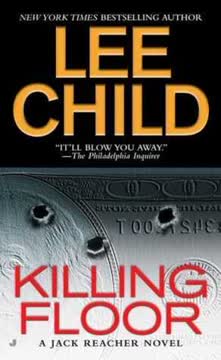
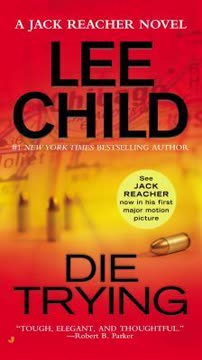
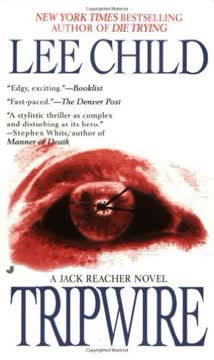
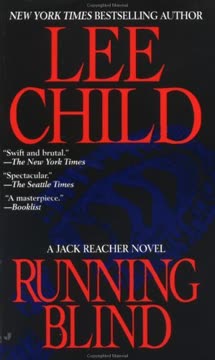
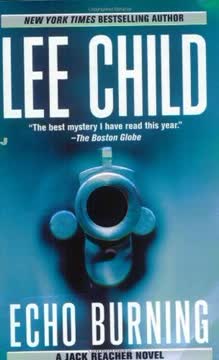
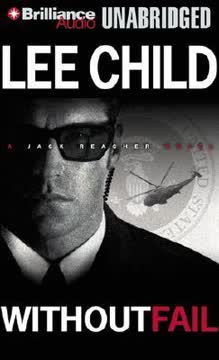
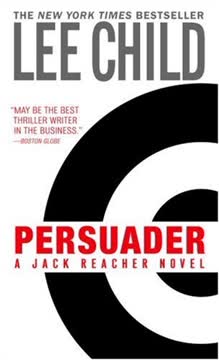
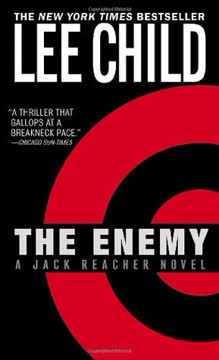
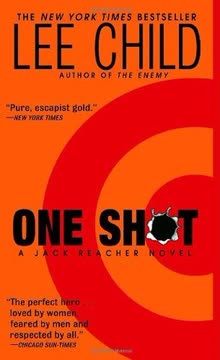
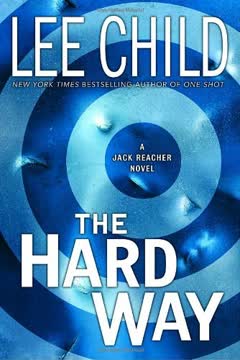
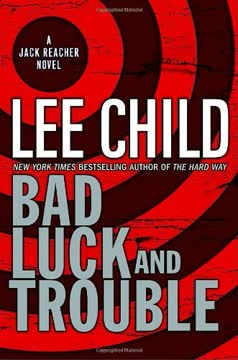
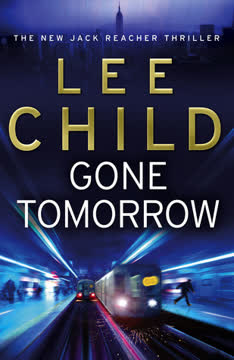
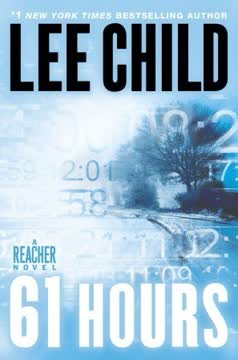
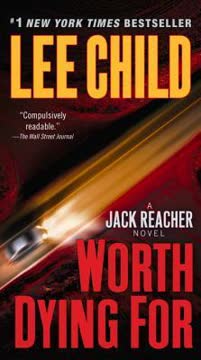
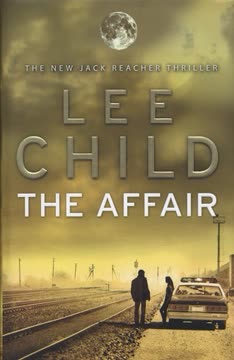
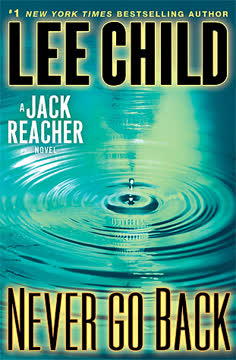

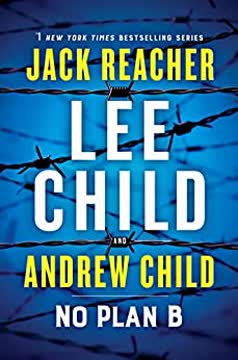
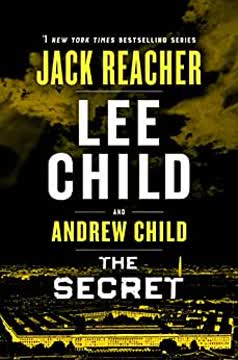
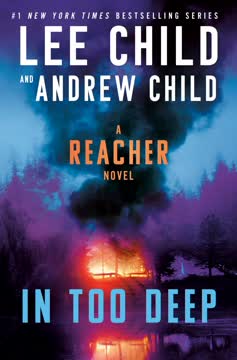
Similar Books
Download PDF
Download EPUB
.epub digital book format is ideal for reading ebooks on phones, tablets, and e-readers.
